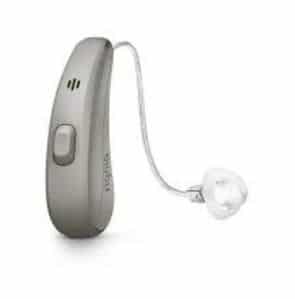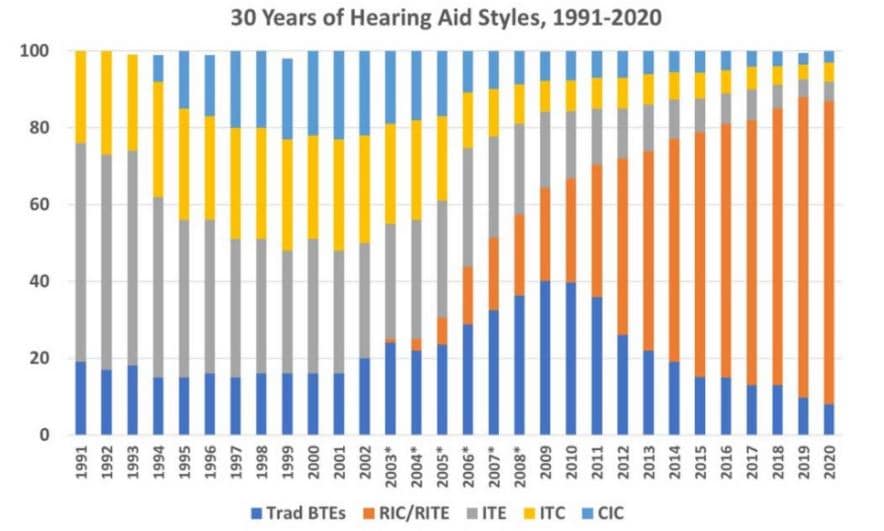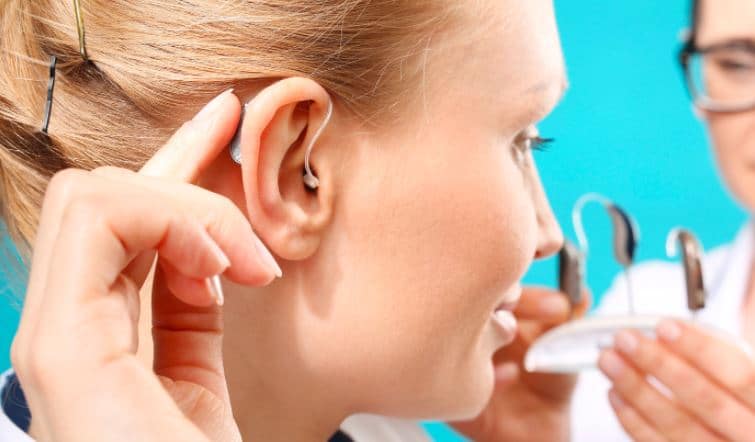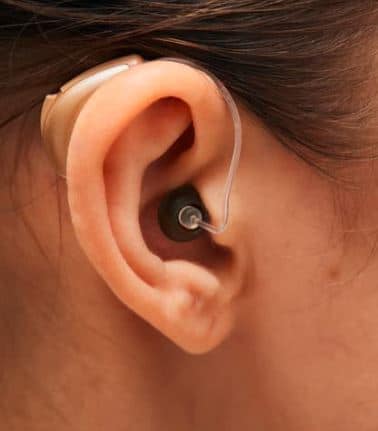By Brian Taylor, AuD, Editor-at-Large

Brian Taylor, AuD
In Chapter 9 of the Studebacher and Hochberg textbook Acoustical Factors Affecting Hearing Aid Performance (second edition), esteemed professor, Margo Skinner1, wrote, “Before any hearing aid evaluation, it is essential to optimize the coupling of a hearing aid to the ear.”
Published in 1993 during the seminal days of prescriptive fitting methods – – an era when hearing aids were still often selected and fitted in the clinic using the now outdated comparative method, Skinner highlighted a critical aspect of the hearing aid fitting process: When an earmold is properly customized to the individual’s ear it results in four key benefits:
- Long-term physical comfort of the device on the ear
- Minimal feedback at desired amplification levels2
- Gain out to 6000 Hz is likely to be maintained
- Reduction of the occlusion effect
In the same chapter, she went on to write these four criteria should be met by all hearing aids on the day of the fitting, and that although it might be difficult to meet these goals, to achieve the best possible outcome for the individual, it is essential to fulfill these four conditions.
Today, given the popularity of instant fit ear tips, many of us seem to have minimized (or even forgotten) the advantages of a customized coupling system and how these four conditions contribute to wearer benefit.
In 1993, getting Skinner’s four factors right required the fitting of a customized earmold – it was, after all, really the only coupling option as instant fit ear tips didn’t really exist. Back then, a successful physical fit of the earmold was determined by the amount of time the clinician could spend with the patient, good clinical judgment, and no small dose of luck. First, a custom earmold had to be tailored to the shape of the individual’s ear – a process that could take a few in-person visits. Second, once the earmold was comfortable, the process of finding the proper vent dimensions to minimize occlusion while maintaining high frequency gain without feedback was sometimes an arduous tightwire act — one requiring patience from both the wearer and the clinician.
What has changed in the past thirty years is that few clinicians routinely order custom earmolds today.
Open-canal, thin tube mini-BTEs with instant fit ear tips and automatic feedback cancellation, like the one shown in Figure 1, changed everything. Introduced in the early 2000s, the combined effects of these two features made the customized earmold process, which is sometimes a bit of a tightwire act, much less daunting.

Figure 1: An example of an open-canal, thin tube mini-BTE with an instant fit ear tip
Open-canal, thin tube mini-BTEs with instant fit ear tips and automatic feedback cancellation, two features introduced to the market at about the same time, are a little bit like the chicken and egg. It’s difficult to know which of the two caused the other to happen. On balance, you often cannot achieve reasonable levels of high frequency gain open-canal BTE using instant fit ear tips without effective automatic feedback cancellation.3 And as a standalone feature, automatic feedback cancellation is not all that interesting unless it is implemented in a smallish, open-canal type of device.
The combination of these two features: automatic feedback cancellation and instant fit, open-canal mini-BTEs took the market by storm around 2003. As Figure 2, created and published by Karl Strom at the Hearing Review last summer keenly demonstrates, the popularity of BTEs began to grow then.
Note in Figure 2 the big uptick in “traditional BTEs” beginning around 2006. This uptick, of course, was driven by sales of the open-canal, thin tube mini-BTEs, which really weren’t all that traditional when compared to their bulkier cousins – the much larger, conventional BTE. Also notice in Figure 2, around 2009, the “traditional BTE” was supplanted by the even sleeker thin-wire, receiver in the ear (RIC) BTE.

Figure 2. June 2021 Hearing Review data from Karl Strom
Going All-in on Comfort
For the past several years, about 80% of total hearing aids sales have been RICs. A clear trend away from the use of custom-fitted earmolds, as with few exceptions, most RICs are dispensed with instant fit ear tips. Available in five or more options, from completely open and flanged to double-domed and closed.
As their name implies, instant fit ear tips are fitted in a few minutes and they are usually extremely comfortable for the wearer. Instant fit ear tips enable hearing care professionals to fit cosmetically appealing and comfortable devices with minimal occlusion. But they come with a potential downside: Instant fit ear tips are the coupling method of choice for on-line hearing aid retailers. Additionally, two of the key benefits of custom coupling –minimal feedback at desired amplification levels and a smooth frequency response out to 6000 Hz with sufficient gain – can be difficult to achieve with instant fit ear tips for many high frequency hearing losses.
I get it. Instant fit ear tips are comfortable and who isn’t looking for more comfort in their life? Plus, instant fit ear tips are a convenient, off-the-shelf solution. But perhaps too often, we are sacrificing many of the benefits of a custom earmold at the altar of comfort and convenience.
Given the variability associated with how ear tips fit in an individual’s ear, however, clinicians roll the dice when it comes to optimizing the benefits of RIC devices.
Without customized coupling, when hearing care professionals over-prescribe instant fit ear tips, they are prone to making three critical mistakes that could affect wearer benefit.
1) Underfitting the low and mid frequencies. Yes, many types of the instant ear tips effectively overcome the occlusion effect, but in many cases, they roll-off excessive amounts of low – and even mid-frequency gain. For example, Balling and colleagues4 found that completely open ear tips had an average vent loss of about 20 dB at 500 Hz and 10 dB at 1000 Hz, with considerable individual variability – many wearers had substantially more roll-off at those frequencies. Even the more occluding double dome ears tips, according to this study, have an average vent loss at 500 Hz of about 10dB, with a few wearers experiencing 10 to 15 dB of roll off at 1000 Hz.
This excessive low and mid-frequency roll-off can negatively affect the audibility of speech and the performance of directional microphones systems for wearers with more than a mild hearing loss at 500 and 1000 Hz. These effects can be minimized with a feature like Signia’s Own Voice Processing (OVP), a feature that “learns” the wearers own voice and reduces its gain automatically.

2) Not accounting for the clear path noise has to the eardrum. Often when a more open, instant fit ear tip is used, the resonance of the unoccluded ear canal is maintained, usually around 2000-3500 Hz. This peak is often as large as 15-20 dB in many wearers. Now, imagine a listener with background noise (speech babble) of 60 dB SPL in the 2000 to 3000 Hz range coming from behind the wearer. It’s possible that good directional microphone technology will reduce the amplification for this noise by 15-20 dB, compared to speech from the front. But when a more open, instant fit ear tip is used this noise has a clear path to the eardrum. And because of the boost from the ear canal resonance when this noise reaches the eardrum it won’t be 60 dB SPL, but 75-80 dB SPL. Therefore, one advantage of a closed fitting is to alter the clear path of noise and minimize this problem. Yes, this also means that the desired speech signal from the front doesn’t receive the resonance boost, but that easily can be accounted for by programming the appropriate amount of amplifier gain to maintain the natural ear canal resonance of the wearer.
 Additionally, if the fitting is more closed with a custom RIC mold, another advantage will be that the earmold is more likely to act as an earplug for surrounding noise. This more closed coupling system does not impact the desired amplified speech signal, as it has a different pathway to the ear canal via the hearing aid receiver.
Additionally, if the fitting is more closed with a custom RIC mold, another advantage will be that the earmold is more likely to act as an earplug for surrounding noise. This more closed coupling system does not impact the desired amplified speech signal, as it has a different pathway to the ear canal via the hearing aid receiver.
When noise has an open pathway to the eardrum and there is also leakage out of the ear of the amplified speech signa both these factors reduce the signal to noise ratio (SNR) at the eardrum.
An SNR that might be +10 dB or better in the lower frequencies with good noise reduction processing and a closed earmold, likely will be 0 dB SNR if that same fitting is open. The bottom line is that if we want the sophisticated processing of the different features to function optimally, then we do not want direct sound to have a pathway to the eardrum – a result much more likely to happen with many instant fit ear tips – even double domes.5
3) Underuse of the feedback canceller. Maybe not directly related to the use of instant fit ear tips, but nevertheless a common problem associated with fitting hearing aids today. I’ve examined a lot real-ear measures over the years and invariably upon first fit, RIC devices coupled to the ear with instant fit ear tips are more than 10 dB below the high frequency NAL target. Of course, it is easy to bump up the gain when you see this, but I think we can be more confident when bumping up the high frequency gain if a custom earmold is used in combination with modern feedback cancellers.
Hearing aids have had effective feedback cancellers for more than a decade that enable them to easily match many high frequency gain targets without feedback. The best feedback cancellers (Signia is among them), allow you to squeeze another 10 dB of high frequency gain from the device, which expands the fitting range up to 20 or 25 dB. But when clinician’s rely on first-fit settings, and don’t verify a validated gain target with real ear measures, it is common to underfit in the highs, Therefore never really pushing the automatic feedback canceller to squeeze additional gain from the device. In many cases, when the high frequencies are underfit, the HCP is essentially not engaging the feedback canceller – a feature that wearers pay for when they purchase devices, but one that may never ever have to do its job.
Here a word of caution is needed. Even though the automatic feedback canceller may allow you to turn up the high frequency gain, only increasing the high frequencies without an appreciable boost in low frequency gain can result is wearer perceptions of poor sound quality or “tinniness” – another important observation from Margo Skinner that was recently written about at HHTM by Marshall Chasin – and a task more easily accomplished with a custom earmold.
Checking all the Boxes
Given the variability in the quality of physical fit associated with ear tips, it’s worth revisiting Skinner’s four benefits of customized coupling.
- Long-term physical comfort of the device on the ear
- Minimal feedback at desired amplification levels
- Gain out to 6000 Hz is likely to be maintained
- Reduction of the occlusion effect
Although instant fit ear tips provide outstanding comfort for the wearer without occlusion, and they are quick to fit for the clinician, they come with a tremendous potential downside. Beyond a mild hearing loss, it can be next to impossible to meet all four of Skinner’s criteria with today’s RIC unless it is coupled to the ear with a custom-made earmold – a task that must be conducted by a licensed professional and cannot be duplicated by on-line OTC retailers.
For many wearers, you cannot readily achieve these four benefits without a customized coupling system. You could, in fact, argue that nearly all wearers benefit from customized coupling – that it is worth the time to take an ear scan (or ear impression) and carefully tailor the physical fit to the ear canal dimensions of the wearer.
But wait there’s more. There are two additionally benefits of a customized coupling system, often overlooked by hearing care professionals – benefits that transcend the magnitude of hearing loss.
- Easier for the wearer to insert into the ear canal
- Stays secure in the ear
The intent of this article is not to bash instant ear tips. Of course, for the appropriate candidate they are tremendously effective and should remain an integral part of the clinical “toolbox.” Rather, the point here is to remind HCPs of the forgotten benefits of customized earmolds – benefits audiology pioneers like Margo Skinner promoted more than 30 years ago that seem to be getting lost in the maw of ever-improving hearing aid technology.
As OTC device options loom, hearing care professionals’ ability to customize the coupling of earmolds of all devices could be a key differentiator in their success. All things considered, clinical best practices warrant that variability be driven out of the decision-making process. Routine use of customized coupling, even for RICs, is one more way to reduce this variability and improve the probability of excellent patient outcomes.
We are not finished with the value of customization. The next installment of Signal and Noise will examine the importance of customizing audibility.
Footnotes:
- Margaret “Margo” Skinner was a professor of otolaryngology and director of the Cochlear Implant and Hearing Rehabilitation Program at Washington University. She was the author of the 1988 textbook, Hearing Aid Evaluation. Skinner died in 2008.
- Desired amplification levels should be interpreted as both gain at a preferred loudness level for the patient and prescribed gain that closely matches a scientifically validated target, like the NAL-NL2. Often, according to research, these are similar values.
- Although all major hearing aid manufacturers employ automatic feedback cancellation, there are considerable differences across product lines. For example, one key metric of a feedback canceller is additional gain before feedback (AGBF). Based on the findings of Marcrum et al (2018) * there is an 8 to 10 dB advantage on AGBF for some hearing aid manufacturer’s feedback canceller compared to others. This 8 to 10 dB advantage on AGBF can expand the fitting range of the instrument by 15-20 dB. This means that a hearing aid with a mediocre feedback canceller can match high frequency gain targets for losses up to 50dB at 4KHz, while a high quality feedback canceller can match high frequency gain targets for losses up to 65 or 70dB at 4 KHz.*
- * Marcrum, S. C., Picou, E. M., Bohr, C., & Steffens, T. (2018). Feedback reduction system influence on additional gain before feedback and maximum stable gain in open-fitted hearing aids. International journal of audiology, 57(10), 737–745.
- This is one of the few published studies that has examined the variability of instant fit ear tips, which is surprising given the popularity of RIC devices. *
- *Balling LW, Jensen NS, Caporali S, Cubick J, Switalski W. Challenges of instant-fit ear tips: What happens at the eardrum? Hearing Review. 2019;26(12)[Dec]:12-1
- For a more in-depth analysis of the problems associated with a more open fit and the benefits of a more closed fit, please see this AO Signia Expert Series course from Gus Mueller at https://www.audiologyonline.com/audiology-ceus/course/signia-expert-series-ten-or-36750’
About the Author
Brian Taylor, AuD, is the senior director of audiology for Signia. He is also the editor of Audiology Practices, a quarterly journal of the Academy of Doctors of Audiology, editor-at-large for Hearing Health and Technology Matters and adjunct instructor at the University of Wisconsin.
*feature image courtesy of Cambridge in Color






